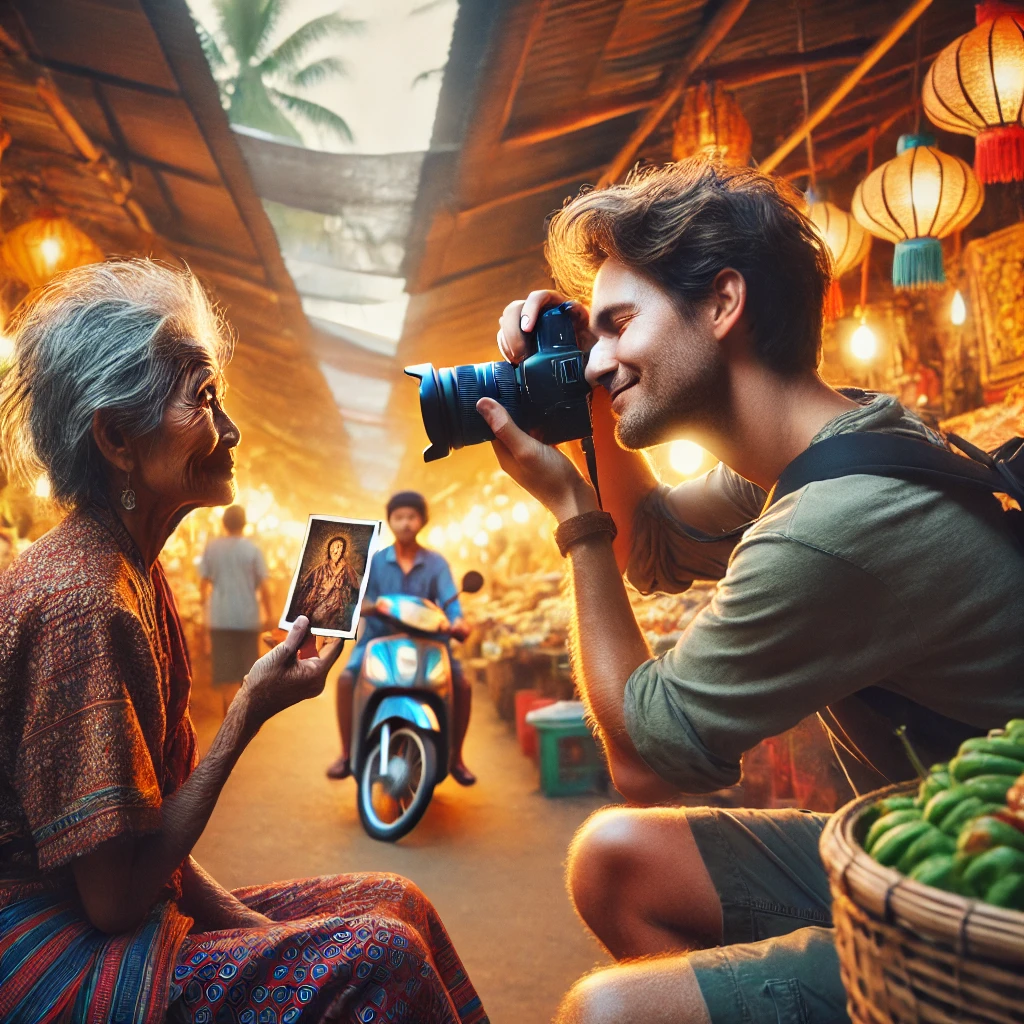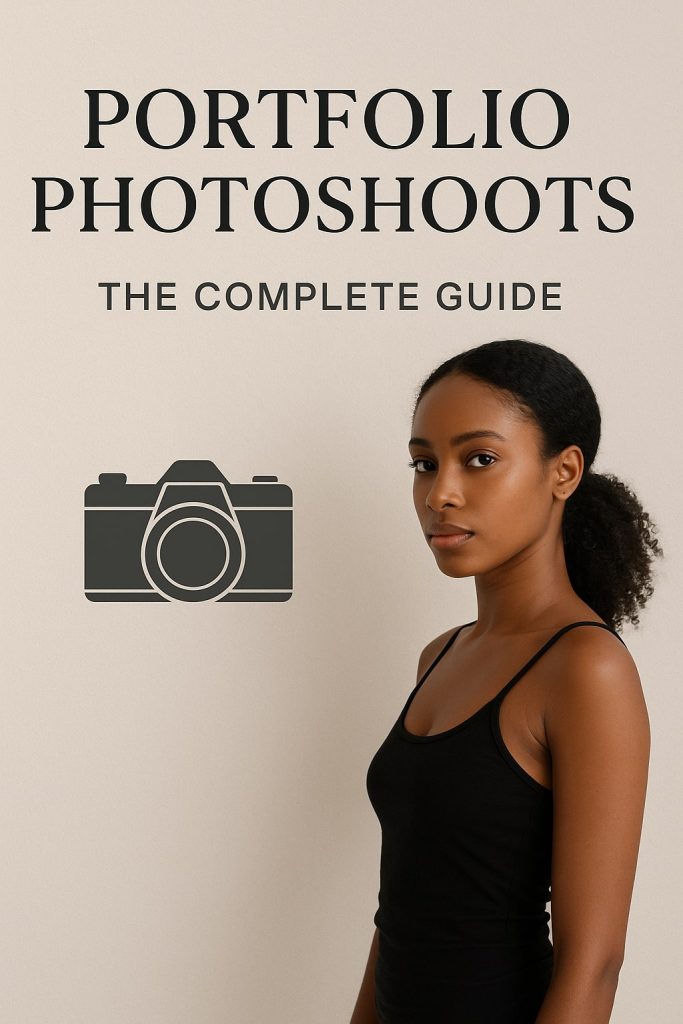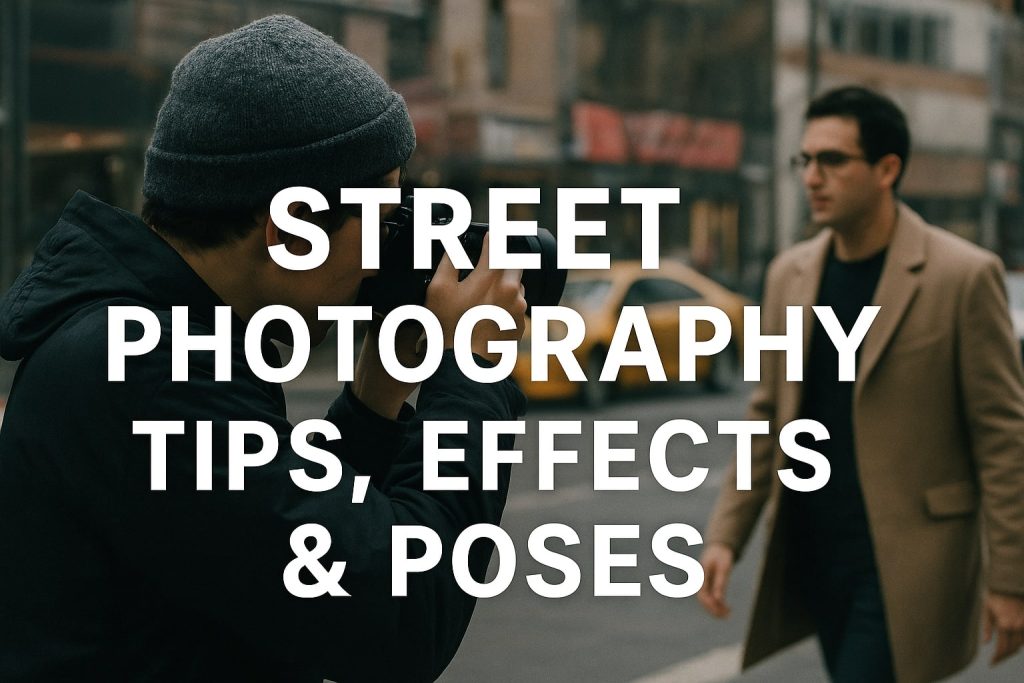Travel photography is an art that goes beyond capturing landscapes and monuments. One of the most powerful elements of travel photography is portraits of strangers—candid moments that tell stories of cultures, traditions, and emotions. However, photographing people in unfamiliar places requires skill, respect, and an understanding of ethical considerations.
In this detailed guide, we’ll explore how to approach strangers, gain their trust, use the right camera settings, and create impactful portraits that stand out in your travel portfolio.
Why Photograph Strangers?
1. Storytelling Through Faces
Portraits of strangers help tell the real stories of the places you visit. Expressions, clothing, and surroundings provide an authentic glimpse into different cultures, showcasing human diversity in a compelling way.
2. Unique & Authentic Moments
Unlike staged travel shots, candid portraits bring out raw emotions and genuine expressions, making them more captivating and relatable.
3. Enhancing Your Travel Portfolio
Photographing people adds depth to your travel portfolio. It differentiates your work by providing a human element to the destinations you cover.
4. Connecting with Cultures
Engaging with people while taking their portraits helps you immerse yourself in local traditions, allowing you to gain a deeper appreciation for the place and its people.
Overcoming Challenges in Portrait Photography While Traveling
1. Shyness & Fear of Rejection
Approaching strangers can be intimidating, but practice builds confidence. Start by smiling, engaging in small talk, and seeking permission politely.
2. Language Barriers
A friendly approach combined with non-verbal cues—like gestures or pointing at your camera—can help communicate your intent. Learning basic local phrases also makes a difference.
3. Cultural Sensitivities
Some cultures have strict rules about photography. Always research local customs beforehand and respect people’s boundaries.
4. Gaining Trust
Building rapport is essential. Instead of snapping a picture immediately, spend time interacting with your subject. A few minutes of conversation can make them comfortable, resulting in natural and expressive portraits.
How to Approach Strangers for Portrait Photography
1. Start with Observational Photography
Before approaching anyone, observe their surroundings. Look for interesting characters, unique expressions, or engaging activities. This will help you identify the perfect subject.
2. Make Eye Contact & Smile
A genuine smile helps break the ice. If the person smiles back, it’s an open invitation to start a conversation.
3. Use a Friendly Introduction
If language permits, introduce yourself and explain why you’d love to take their portrait. Keep it simple:
“Hi! I’m a travel photographer capturing the beauty of this place. Your expression is amazing—would you mind if I took your portrait?”
4. Show Interest in Their Story
People love sharing stories. Ask about their work, culture, or daily life. When they see your genuine interest, they’re more likely to agree to a portrait.
5. Offer to Share Their Portrait
Let them know you’ll send the final photo. Some travelers carry instant print cameras to give a physical copy as a token of appreciation.
6. Respect a “No”
If someone declines, respect their decision and move on gracefully. Avoid being persistent or making them uncomfortable.
Best Camera Settings for Capturing Portraits of Strangers
1. Use a Wide Aperture (f/2.8 – f/5.6)
A wide aperture creates a shallow depth of field, blurring the background while keeping the subject sharp, making the portrait stand out.
2. Adjust Shutter Speed (1/200s – 1/1000s)
Since people move naturally, a fast shutter speed helps freeze their expressions without motion blur.
3. ISO Settings (100-800)
In bright outdoor conditions, use a lower ISO (100-200) to avoid noise. In low-light environments, increase ISO while balancing noise reduction.
4. Focus Mode: Single-Point Autofocus
Use single-point autofocus on the subject’s eyes to ensure a crisp and sharp expression.
5. Natural vs. Artificial Lighting
- Golden hour (early morning or late afternoon) provides soft, flattering light.
- Cloudy weather offers diffused lighting, reducing harsh shadows.
- Reflectors or nearby light sources can help brighten faces.
Composition Techniques for Stunning Portraits of Strangers
1. Rule of Thirds
Position your subject slightly off-center to add dynamism and balance to the frame.
2. Leading Lines
Use natural lines like streets, walls, or fences to guide the viewer’s eye toward the subject.
3. Frame Within a Frame
Utilize doorways, arches, or windows to create a unique framing effect.
4. Environmental Portraits
Incorporate elements of the subject’s environment to tell a deeper story. For example, a fisherman holding a net on the shore conveys his livelihood.
5. Candid vs. Posed Shots
- Candid shots capture spontaneous emotions.
- Posed portraits allow better control over lighting and background.
Post-Processing Tips for Professional-Looking Portraits
1. Basic Adjustments
Enhance exposure, contrast, and white balance to maintain natural skin tones.
2. Retouching
Use healing tools to remove distractions like blemishes while keeping the image realistic.
3. Color Grading
Slight color corrections can enhance mood and improve the visual impact of your portrait.
4. Black & White vs. Color Portraits
Monochrome portraits highlight expressions, while vibrant colors add cultural richness.
Ethical Considerations in Stranger Photography
1. Always Seek Consent
Whenever possible, ask for permission before clicking someone’s portrait.
2. Avoid Misrepresentation
Never alter photos in a way that misrepresents the subject’s story or identity.
3. Respect Privacy
Be mindful when photographing sensitive subjects, especially in religious or vulnerable communities.
4. Do Not Exploit for Gain
If you’re monetizing your travel portraits, ensure that your subjects are aware and compensated when necessary.
Conclusion: Telling Powerful Stories Through Portraits
Capturing portraits of strangers is a rewarding experience that connects you with people and cultures on a profound level. With the right approach, camera techniques, and ethical mindset, you can create compelling travel portraits that tell meaningful stories and leave a lasting impression.
So next time you’re on the road, step out of your comfort zone and try photographing a stranger—you might just capture the best portrait of your journey!

Mobile Photography Hacks: Candid Moments with Your Phone
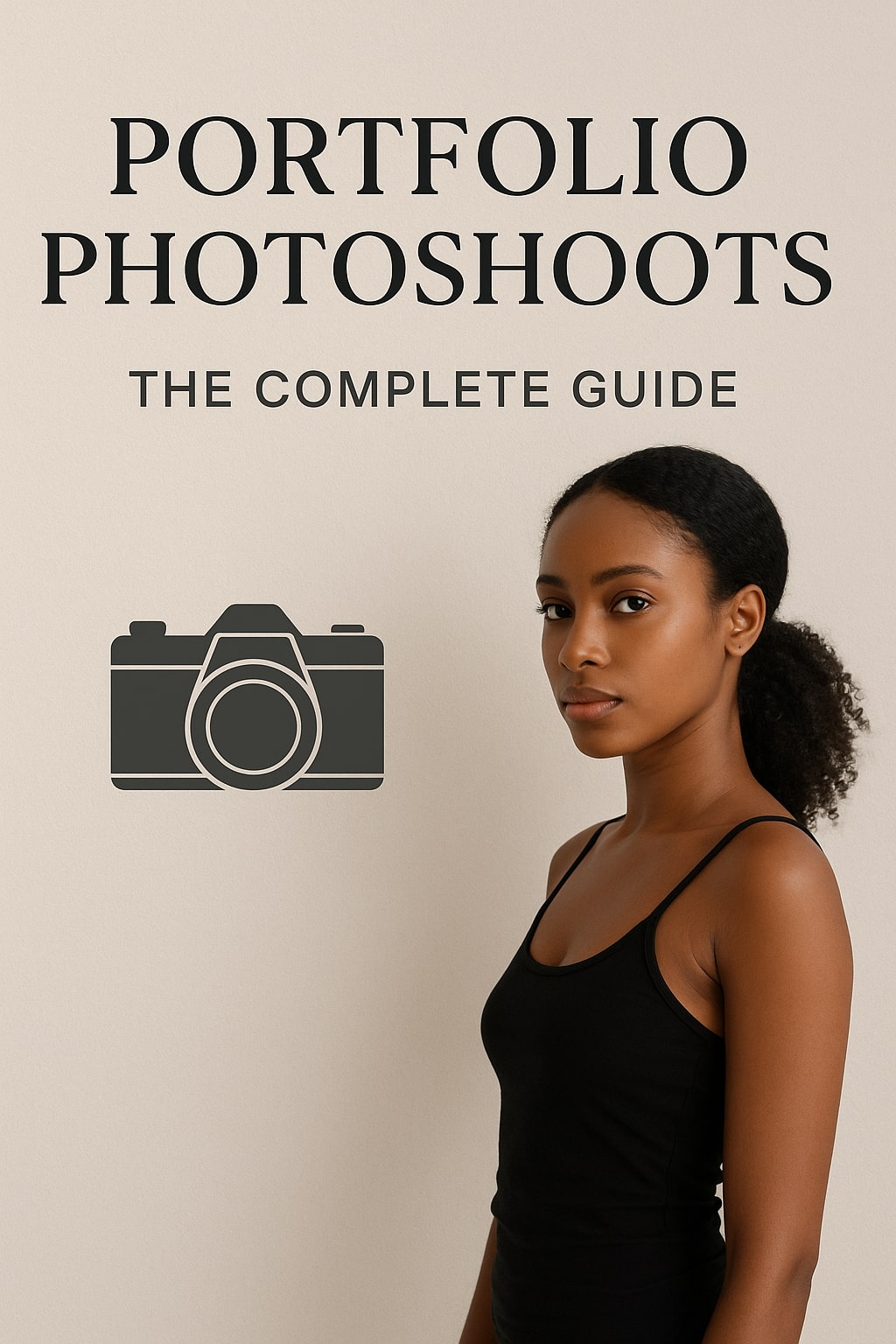
Professional Model & Portfolio Photoshoots: Show Your Best Work
-
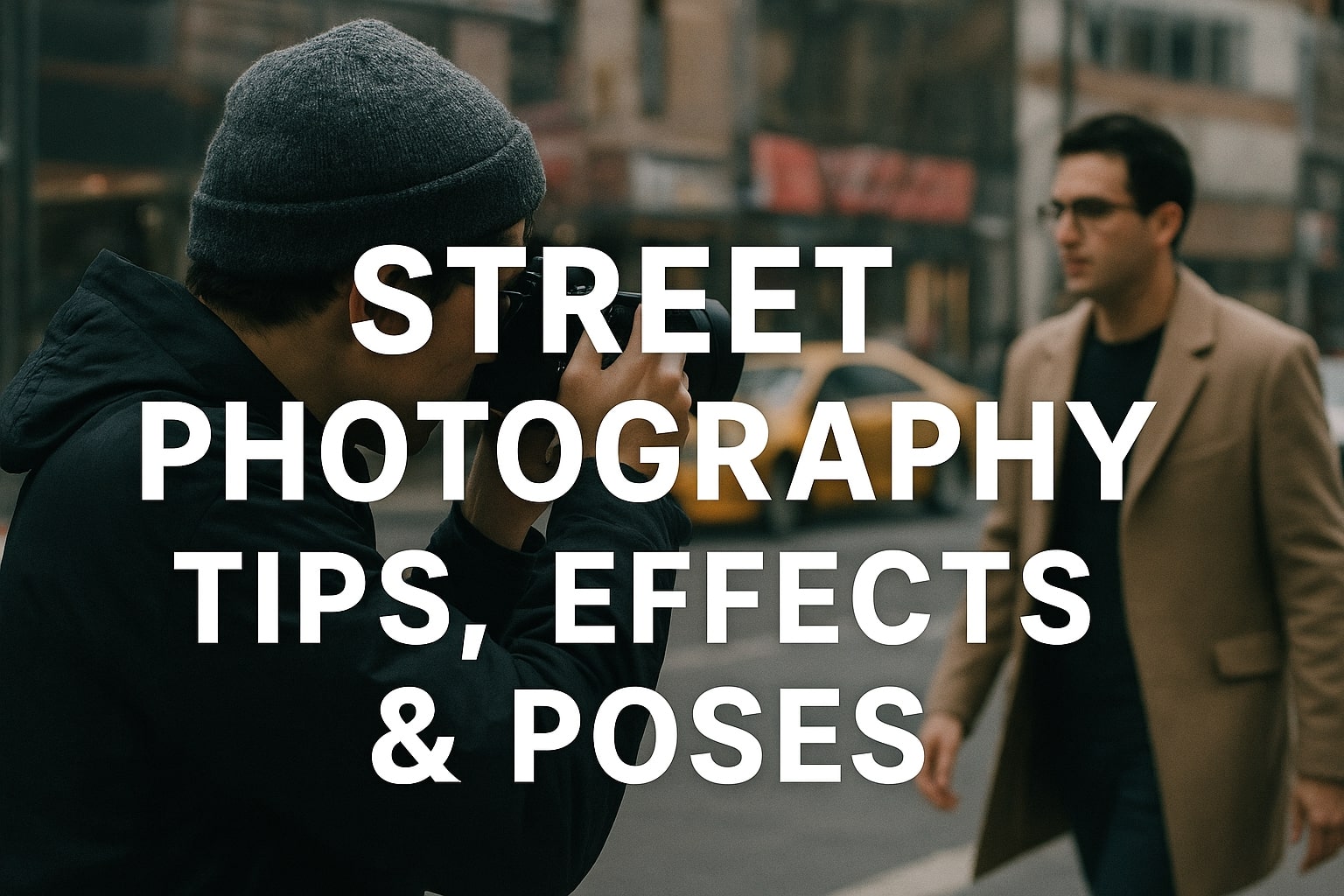
Street Photography Tips, Effects & Poses – Complete Guide
-

Leica Q2 for Photography: Why It’s Loved by Photographers
Mobile Photography Hacks: Candid Moments with Your Phone
Discover high-impact mobile photography hacks to capture genuine, gorgeous candid moments with your phone. Learn practical tips, composition secrets, and pro techniques to turn everyday scenes into stunning visual stories. Introduction: The New Age of Mobile Photography Photography has evolved beyond heavy cameras, technical jargon, and expensive equipment. Today, the power to capture extraordinary moments
Professional Model & Portfolio Photoshoots: Show Your Best Work
” Discover how to plan, style, and execute stunning portfolio photoshoots that showcase your skills, personality, and versatility. This comprehensive guide covers professional tips, posing ideas, gear suggestions, and industry insights for models and photographers.” Introduction – Why Portfolio Photoshoots Are the Cornerstone of a Photographer’s Career A well-crafted portfolio photoshoot is more than a
Street Photography Tips, Effects & Poses – Complete Guide
Discover the ultimate guide to Street Photography with expert tips, creative effects, and dynamic poses. Learn how to capture authentic urban moments, master composition, and tell powerful visual stories through your lens. Article Outline 1. Introduction to Street Photography Street Photography is more than just taking pictures of people in public spaces — it’s about
Leica Q2 for Photography: Why It’s Loved by Photographers
Introduction: The Cult Status of the Leica Q2 The Leica Q2 is not just a camera—it’s a statement. Combining the heritage of German precision engineering with modern digital excellence, it holds a special place in the hearts of professional and passionate photographers alike. With its full-frame sensor, prime Summilux lens, and minimalist design, the Q2
Top Cameras Under ₹1 Lakh for Freelance Photography
Freelance photography is no longer a niche—it’s a booming creative profession that demands not only vision and hustle but also the right gear. Your camera isn’t just a tool; it’s your storytelling partner. If you’re a freelance photographer aiming to balance performance, versatility, and budget, investing in a cameras under ₹1 lakh can offer the
Top Features of Nikon D850 That Make It Ideal for Photoshoots
Explore the top features of the Nikon D850 that make it a powerhouse for photoshoots. From exceptional resolution to dynamic range, this detailed Nikon D850 guide is built for professional and aspiring photographers. 1. Introduction When Nikon launched the D850, it quickly earned a reputation as a flagship DSLR that redefined what photographers could expect
